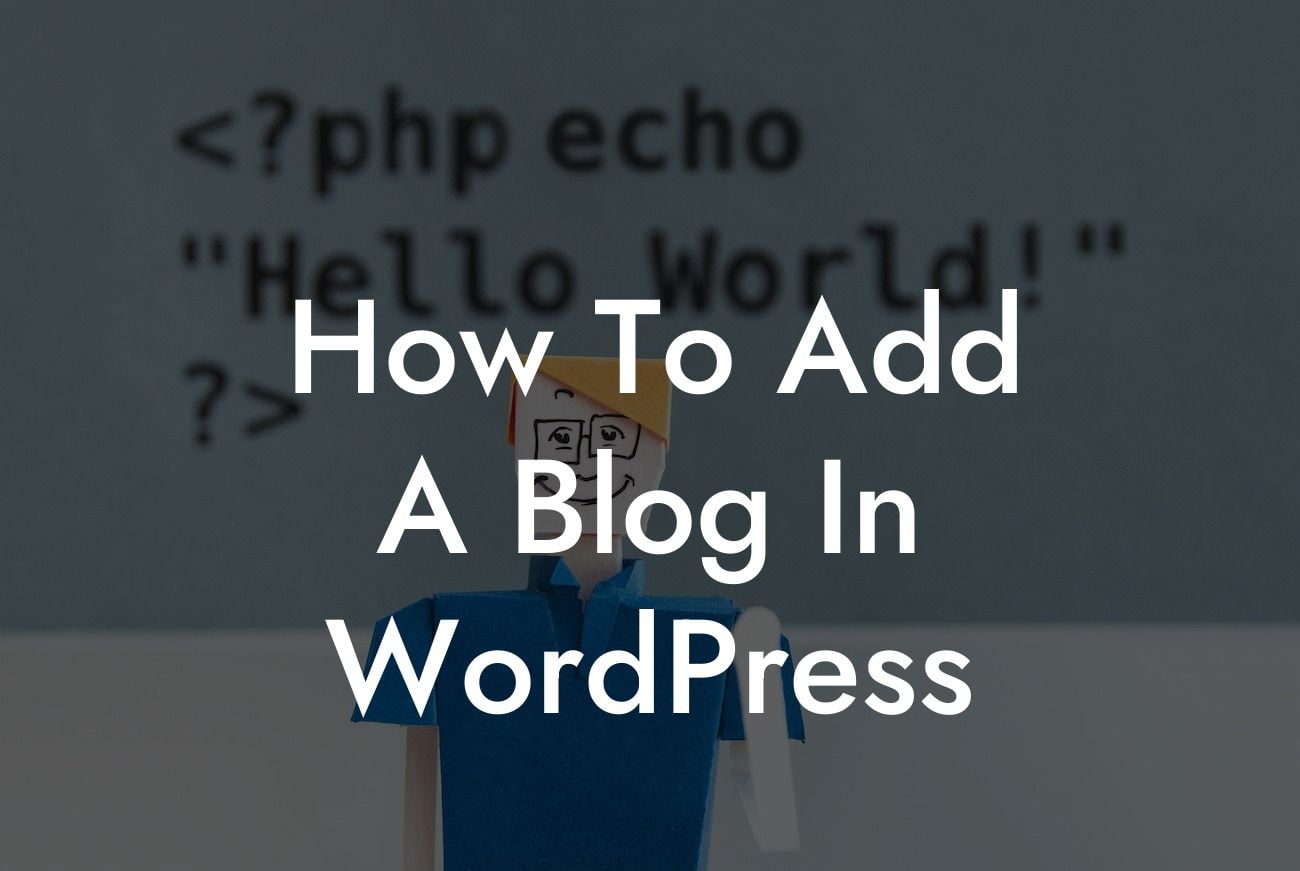Adding a blog to your WordPress website can be a game-changer for small businesses and entrepreneurs. Not only does it provide a platform to showcase your expertise, but it also helps increase your online visibility and engage with your audience. In this guide, we will walk you through the process of adding a blog in WordPress, ensuring that your online presence reaches new heights.
Adding a blog to your WordPress website is a straightforward process that can yield incredible results. Follow these steps to get started:
1. Step 1: Install WordPress - If you haven't already, install WordPress on your domain. You can easily do this through your hosting provider or by using WordPress.org.
2. Step 2: Choose a Theme - Select a theme that aligns with your brand and goals. WordPress offers a wide range of themes, both free and premium, that cater to various industries and design preferences.
3. Step 3: Configure Permalinks - Permalinks are the URLs that point to your blog posts. By default, WordPress assigns a generic structure, but you can customize it to make your URLs more appealing to search engines and users.
Looking For a Custom QuickBook Integration?
4. Step 4: Create Categories - Categorize your blog posts to help visitors navigate your content more easily. Consider the topics you'll be covering and create relevant categories that make sense for your business.
5. Step 5: Set Up Your Blog Page - Create a dedicated page where your blog posts will be displayed. In the WordPress dashboard, go to Pages > Add New. Name the page "Blog" or "News," and save it.
6. Step 6: Publish Your First Blog Post - It's time to start writing! In the WordPress dashboard, go to Posts > Add New. Craft a captivating headline, write compelling content, and add relevant images to enhance your articles. Don't forget to optimize your blog post for SEO with appropriate keywords and meta tags.
7. Step 7: Customize Your Blog - Customize the appearance of your blog by adding widgets, social media sharing buttons, and other plugins that enhance user experience and encourage engagement.
How To Add A Blog In Wordpress Example:
Suppose you run a small bakery, and you want to add a blog to your WordPress website. You could create categories like "Recipes," "Tips & Tricks," and "Behind the Scenes" to share your expertise, showcase your products, and connect with your audience on a deeper level. With regularly updated blog posts, you can attract more visitors, build brand authority, and ultimately increase your bakery's online visibility.
Congratulations! You've successfully learned how to add a blog in WordPress. Now, it's time to put this knowledge into action. Explore DamnWoo's range of awesome WordPress plugins designed exclusively for small businesses and entrepreneurs.
Don't miss out on other insightful guides and articles on DamnWoo's blog. Share this article with others seeking to elevate their online presence, and start transforming your website into a powerful platform that drives success.













